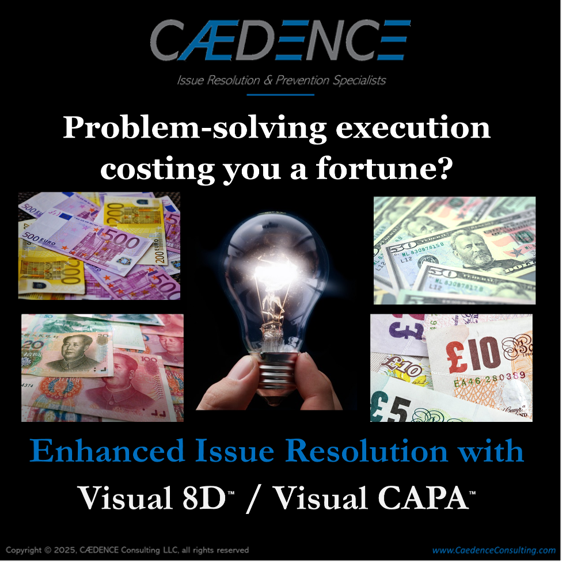What can I do if poor problem solving execution is costing me a fortune?

When ineffective problem-solving costs a fortune, it impacts your business and your bottom line.
Your team is marching through the tools of your company's chosen problem-solving approach. This is time not spent on growing your business or delivering cost reductions. Yet your customers are suffering, and they're not shy about letting you know it! Why isn't it working? Where's the disconnect?
Executed correctly, any of the industry-accepted problem-solving approaches can eventually get your team to a suitable solution. After all, each method follows essentially the same underlying logic. The various paradigms differ only in their specific toolkits and in which elements of the problem-solving process they emphasize. Your company's chosen approach isn't the problem - it's how your team is executing. What's provoking your customers to escalations and painful daily update calls is lapses in communication, both internal and customer-facing.
Visual 8D™/Visual CAPA™ is the answer. Readily customizable to your company's preferred paradigm and terminology, our straightforward Powerpoint-based templates guide teams through ANY problem-solving process while seamlessly producing easy-to-follow visual outputs that customers love. Leveraging the similarity of the most popular issue-resolution approaches, V8D™/V-CAPA™ integrates seamlessly into your systems without disruption. There's no need to scrap or re-invent your chosen approach and there's no need to retrain your staff.
V8D™/V-CAPA™ facilitates internal planning and communication, allowing teams to move much faster. There's no extra work; the normal problem-solving work products are easily created using simple templates that both guide critical thinking. Work products come out in a customer-friendly, easy to follow format. Customers who can see that your team is doing all the right things to protect them and resolve their issue remain calm and confident. This means fewer escalations and much less contentious meetings. It also means getting your team back to delivering your top priorities.

Over the years we’ve been exposed to Six Sigma, Juran, Deming PDCA, 8D, Dale Carnegie, A3, Shainin, and more. Each technique works pretty well, and has been demonstrated many times in a wide variety of industries and circumstances. At the core they are all essentially the same!
Each approach relies on an underlying logical flow that goes like this: [a] make sure the problem is clearly defined; [b] be open to all sources of information; [c] vet the information for relevance and accuracy; [d] use the process of elimination to narrow down all possible causes to the most likely few; [e] prove which of the suspects is really the cause of the issue; [f] generate a number of potential solutions; [g] evaluate the effectiveness, feasibility and risk of the potential solutions; [h] implement the winning solution(s); and [i] take steps to make sure your solution(s) don’t unravel in the future.
The differences between the paradigms resides in supplementary steps and toolkits. For example, 8D contains the important “In









